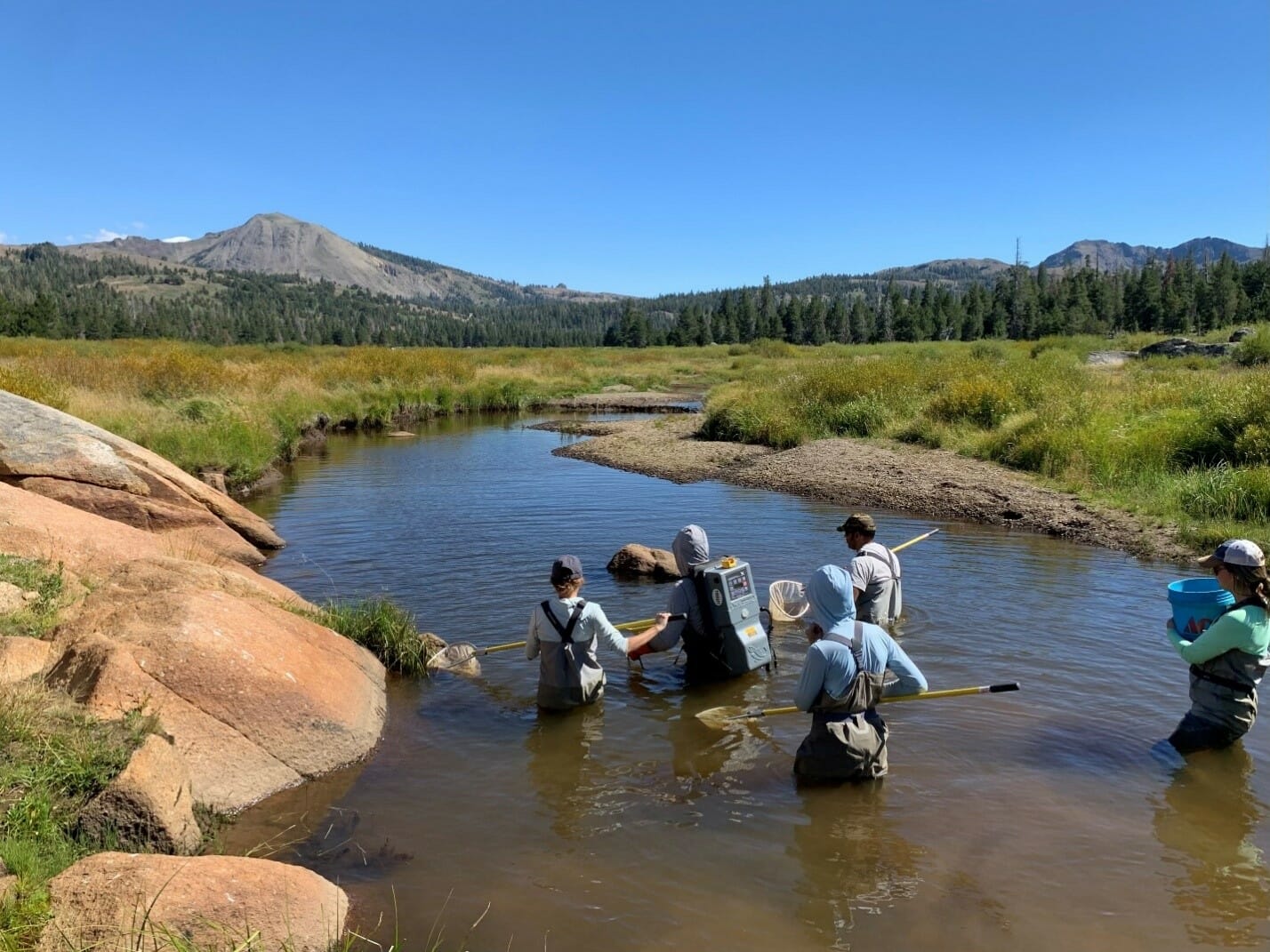Stream restoration projects require a variety of tools and tactics. Sometimes you use a trowel, and sometimes a bulldozer.
In trout and salmon streams where water quality or habitat are highly degraded, you are more likely to need the latter. But when you bring in the heavy machinery, what happens to the fish living in that section of the stream?
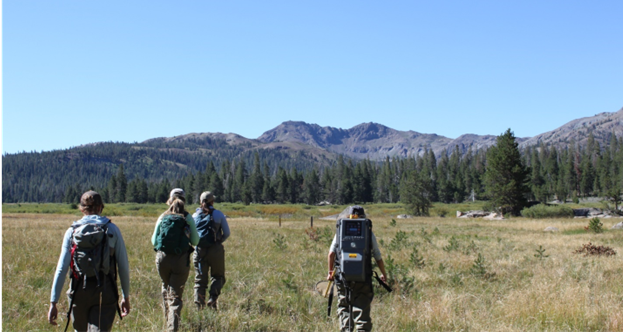
Often, the project manager is required to relocate as many of the resident fish as is possible before the work begins. The goal is to cause as little harm as possible to the fish and to ensure that none remain in a stream channel that has had its flow diverted, as was recently necessary for the Faith Valley Restoration Project.
Located in the Carson River watershed, near the town of Markleeville, California, Faith Valley is one of the 50% of all meadows in California classified as degraded. Situated at 7500 feet of elevation, the West Fork of the Carson River meanders through a picturesque, but threatened, meadow system.
American Rivers, in partnership with the Alpine Watershed Group, the Humboldt-Toiyabe National Forest, Friends of Hope Valley, Institute for Bird Populations, and the California Department of Fish and Wildlife, have been working to restore the stream and meadow in Faith Valley since 2019.
The project’s goals are to repair and halt channel incision, improve habitat for fish and the endangered willow-fly catcher, and repair recreational roads that are impairing stream conditions.
In August 2022, the partnership broke ground on the project and Trout Unlimited was contracted to relocate existing fish before the flow was diverted.
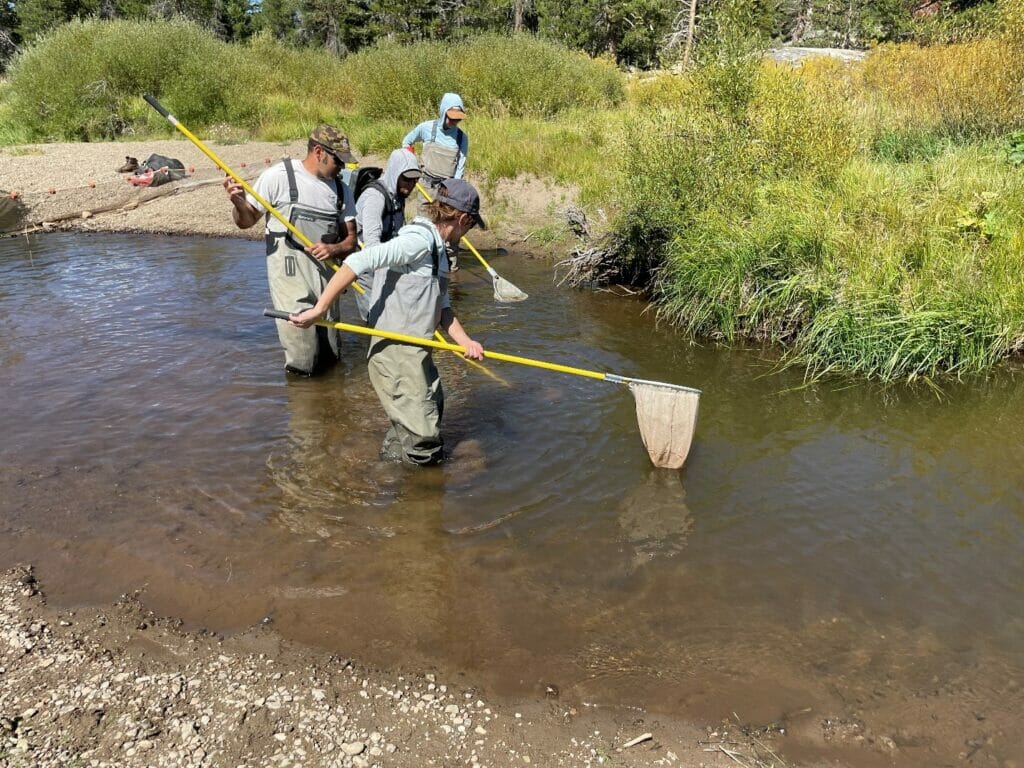
Fish relocation can take many forms, but one of the most effective, and safe, methods is electrofishing. Modern electrofishing equipment causes minimal harm and allows for more precise and accurate sampling and relocation of fish than other methods.
Biologists have a variety of tools at their disposal; electrified seining nets, boat-mounted units and compact backpack electrofishers to name a few.
Different applications determine which is the best option but for the small streams of the Sierra Nevada, a backpack unit is the tool of choice.
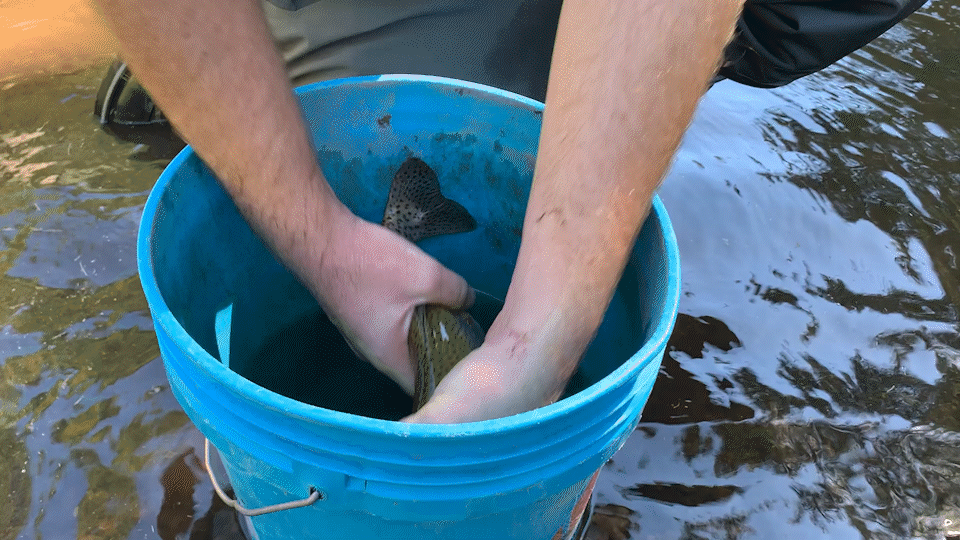
At the beginning of a relocation project, block nets are placed on the upstream and downstream ends of a predetermined reach. The electrofishing team, consisting of at least one shocker and several netters, then moves in a concentrated pattern from the bottom of the reach to the top.
The shocker uses a long probe to administer the electrical current. Any fish within roughly a yard of the probe is temporarily stunned, netted, and immediately placed in a bucket or live well. After a few seconds, the fish will start to regain motor function and after a minute or two is back to swimming freely.
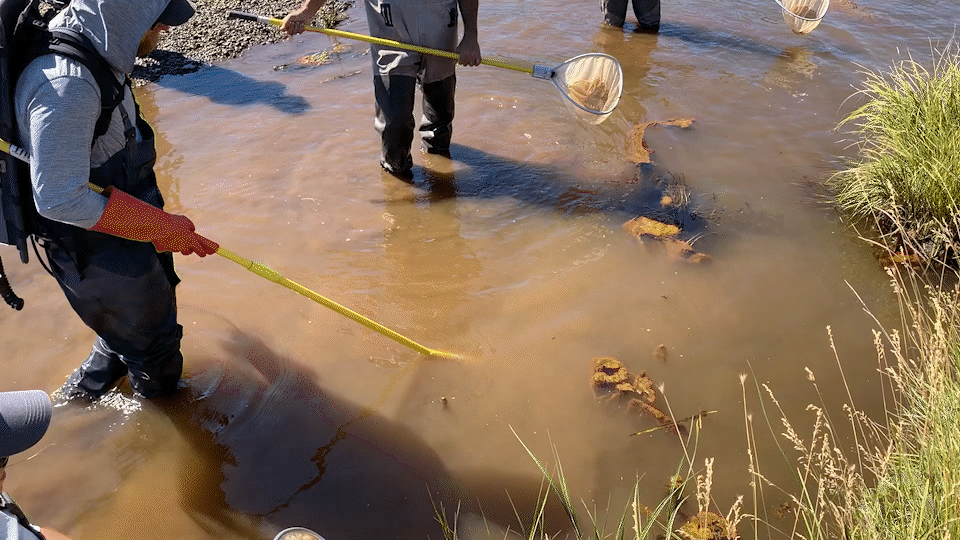
The fish are quickly moved to a designated relocation zone away from the project site and returned to the stream. This process is repeated until no fish remain in the reach.
Trout Unlimited’s California Inland Trout program has led numerous electrofishing projects through the years. Sometimes it is an aspect of restoration projects we are leading and sometimes we are contracted by partners in the conservation community to do this key work.
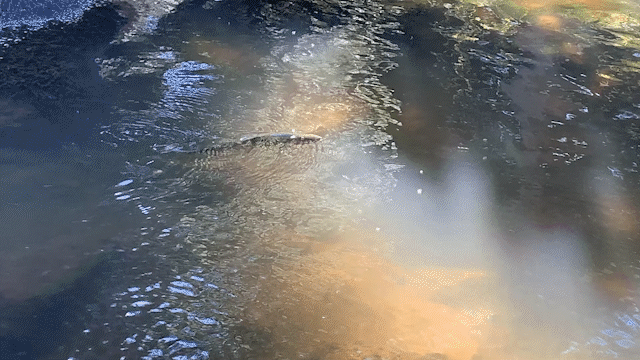
Regardless of the circumstances, there is an immense sense of satisfaction in removing the block nets at the end of a project and knowing that the fish will return to a far healthier and more productive habitat.
Dan Johnson is a project coordinator for TU’s California Inland Trout Program. Dan is based out of Truckee, Calif.



